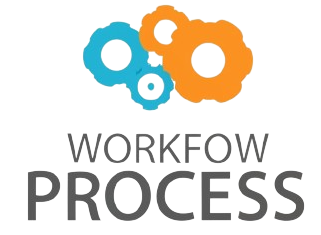How OpenAI’s major investments are transforming the AI compute supply chain for future innovation
Artificial intelligence is evolving at a breathtaking pace, and OpenAI stands at the forefront of this revolution, not just through software breakthroughs but by reshaping the very infrastructure that powers AI. A critical component of AI development is the compute supply chain—the complex web of hardware, data centers, chip manufacturing, and software optimization that delivers the enormous processing power AI demands. OpenAI’s recent major investments are catalyzing fundamental changes across this supply chain. This article explores how these strategic moves are paving the way for faster, more efficient AI innovation, driving collaboration between industry players, and unlocking new possibilities that extend far beyond today’s AI models.
Investing in custom AI hardware development
One of OpenAI’s key strategies involves investing in specialized hardware tailored for AI workloads. Unlike traditional CPUs, AI requires high throughput and parallel processing capabilities, often provided by GPUs or newer architectures like TPUs. OpenAI’s collaborations with leading chip manufacturers and in-house development efforts focus on optimizing chips specifically for their AI models, improving performance while reducing energy consumption.
Real-world example: OpenAI’s partnership with Microsoft to build the Azure AI supercomputer features bespoke GPUs and an optimized interconnect fabric that allows massive parallel training runs. This collaboration demonstrates how tailored hardware investments directly accelerate model training, reducing time from months to weeks and significantly lowering operational costs.
Building scalable and green AI data centers
Beyond hardware, OpenAI invests heavily in creating state-of-the-art data centers that are not only powerful but also environmentally sustainable. Efficient data centers enable large-scale model training by providing the necessary infrastructure while minimizing carbon footprint through innovations such as liquid cooling, renewable energy sourcing, and advanced power management methodologies.
Practical case: Microsoft’s commitment to run 100% on renewable energy by 2025 aligns with OpenAI’s push for greener compute resources. The co-developed Azure supercomputer utilizes cutting-edge cooling technologies to reduce energy usage. This means OpenAI’s AI models are trained on infrastructure that supports global sustainability goals, showing that compute supply chain transformation includes environmental responsibility.
Streamlining AI software and hardware co-design
Hardware alone cannot unlock AI’s full potential; software frameworks must evolve hand-in-hand. OpenAI invests in software that integrates deeply with custom hardware to improve efficiency, reduce latency, and optimize resource allocations. This co-design approach ensures that AI models run more smoothly, are more scalable, and adapt quickly to new hardware capabilities.
Illustrative scenario: OpenAI’s development of optimized training routines for transformers on GPUs is an example of software-driven performance gains. By tailoring algorithms to leverage specific hardware features such as tensor cores or memory hierarchies, OpenAI accelerates training times and drives down costs—helping to democratize access to advanced AI capabilities.
Strengthening partnerships to diversify the compute ecosystem
OpenAI understands that transforming the AI compute supply chain requires collaboration. Their investments extend to forming strategic alliances with cloud providers, semiconductor companies, and research institutions. These partnerships help build a more resilient, diverse supply chain capable of adapting to the growing demand for AI compute.
Case study: OpenAI’s multi-year alliance with Microsoft is emblematic of how joint investment shares risk and accelerates innovation. By pooling expertise and resources, they have launched one of the world’s most powerful AI supercomputers accessible via cloud services. Such partnerships create scalable solutions that smaller organizations can leverage, broadening AI’s reach and impact.
Conclusion: shaping the future of AI innovation through compute supply chain investment
OpenAI’s major investments are driving a profound transformation in the AI compute supply chain from multiple angles. By fostering advancements in custom hardware, building sustainable and scalable data centers, emphasizing hardware-software co-design, and cultivating robust partnerships, OpenAI creates a resilient foundation for future AI development. These efforts not only accelerate model training and deployment but also reduce energy consumption and lower costs, enabling wider access to cutting-edge AI technologies. As a result, OpenAI’s strategic investments are not just powering the next generation of AI breakthroughs—they are redefining how the entire AI industry approaches compute infrastructure, ensuring innovation remains rapid, sustainable, and inclusive.
